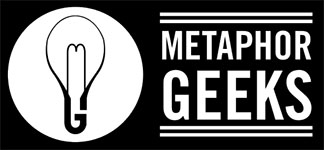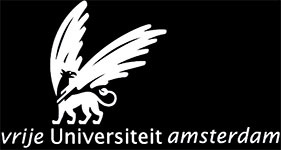VisMet 1.0
VisMet 1.0 is the pilot phase of an envisioned larger academic project, hosted by the Metaphor Lab (Faculty of Arts, VU University Amsterdam) in collaboration with the Network Institute (VU University Amsterdam) and Metaphor Geeks (International Center for Intercultural Exchange). The VisMet project aims at creating an online resource of annotated images (a corpus) that can be used by students and researchers from different academic fields interested in visual rhetoric, and in particular in understanding, analyzing, and comparing visual metaphors and their configuration with other visual tropes, across a variety of images and genres.
The current version, VisMet 1.0, contains around 350 images. It is our aim to enlarge the project in the near future with new materials and new functionalities, such as an online tool for crowdsourcing tags for the collected images, and an open forum for discussing various topics related to the project. Thus, we envision VisMet to be a “democratic”, scalable, and dynamic corpus, where the most recent debates, insights, and analyses around visual and multimodal metaphors can be shared in order to achieve an advance in common knowledge in the field of visual metaphor use. Moreover, we believe that the achieved shared knowledge will be of great benefit to future creative realizations of visual metaphors, and thus will be of interest for all the artists, photographers, and illustrators that gave us permission to include their images in this corpus.
VisMet 1.0 coordinator dr. Marianna Bolognesi and scientist in charge prof. Gerard Steen, together with VisMet 1.0 research assistant Romy van den Heerik and Metaphor Lab assistant Esther van den Berg, envision this corpus as a platform that will hopefully attract a variegated community of scholars who will provide their valuable contributions to the field of visual metaphors, by suggesting new insights and analyses pertaining to the existing materials.
Where the images come from: the selection process
For the corpus, we collected visual metaphors: images in which the viewer is stimulated to project (or map) at least one feature belonging or evoked by the source domain onto the target domain. This way, the viewer is to construe one (or more) non-reversible A-IS-B identity relation(s), where at least one of the two domains is expressed or cued by visual means that show perceptual incongruities (following Šorm and Steen 2013; Šorm and Steen in preparation). In this sense, we included monomodal pictorial metaphors, as well as multimodal metaphors of the verbo-pictorial variety, where one of the two domains is defined or cued verbally. This phenomenon is frequent in advertising (where the textual slogan or the company logo often help us identifying the target domain –the product or service to be sold), as well as in political cartoons (where the textual anchors help framing the topic and directing our attention to the right target domain), and art (where often the title of the artwork defines the target domain). We believe that linguistic anchors within and outside the image are often crucial to identify the source and target domains, the mappings, and to interpret visual metaphors in general.
We selected these images that included metaphors from a variety of online databases (collections of advertisements, galleries of cartoons, artists’ personal portfolios etc.) and asked the authors/copyright holders of the images for an explicit permission to reproduce the images online (for details about copyright issued and terms of use of VisMet, please go here).
The images that we collected for VisMet belong to the following genres: advertising (commercial and social campaigns), art (illustrations, photographs, graffiti), political cartoons, and a category called “other” which includes other non-classified images. It is possible to browse the corpus by selecting the genre of the images, that can be found under “context” in the Browse menu.
Surely, different genres present intrinsic differences concerning the visual metaphor expressed. Visual metaphors in advertisements, for example, tend to be understandable also when decontextualized, and they often display concrete source and target domains (i.e. the product to be sold needs to be interpreted in terms of another object, from which specific features are acquired). Visual metaphors in political cartoons, unlike many advertisements, tend to need a lot of contextual information in order to be understood (knowledge about the political events taking place in a specific time and setting, knowledge about the journal or newspaper in which they appear, etc.). Moreover, cartoonists often have a personal style, which emerges in the artworks, and being familiar with this “poetics” often helps understanding the intended message.
Defining visual metaphor and framing the project within the academic landscape
In contemporary research, the definition of visual metaphor varies from broad categories of visual rhetorical tropes to restrictive and specific types of images. For example, Kennedy (1982) broadly describes visual metaphors as intended violations of standard modes of depiction that are universally recognizable. Kennedy’s model sketches 25 types of visual metaphor including a variety of other tropes, such as metonymies and litotes. Similarly, Whittock (1990) identifies 10 types of visual metaphor in cinema (see Forceville 2008: 468 for an overview). In recent years, the models of visual metaphor that have been proposed seem to apply to narrower sets of images (see Phillips and McQuarrie 2004; Gkiouzepas and Hogg 2011), and they appear to be based on a model proposed by Forceville (1996; 2002), which was derived from the analysis of visual metaphors in advertisements.
We believe that the model tends to remain "stuck" at the level of the sign, defining the denotative meaning of the metaphor. As other scholars also did, we have observed that metaphor is often combined with metonymy in visual realizations, in order to cue abstract concepts (see also Koller 2009; Forceville 2009), which are often crucial for understanding what we believe is the ultimate target domain of the metaphor. Therefore, we opted for a more comprehensive and variegated taxonomy of visual metaphor, which articulates around the three dimensions of meaning identified in Sorm and Steen (in preparation): expression, conceptualization and communication (see Annotation scheme). Such model can be applied to different genres, can be applied to images that seem to include (possibly together with other tropes) visual metaphors, and it takes into account the contemporary cognitivist approach to metaphor as a figure of thought.



